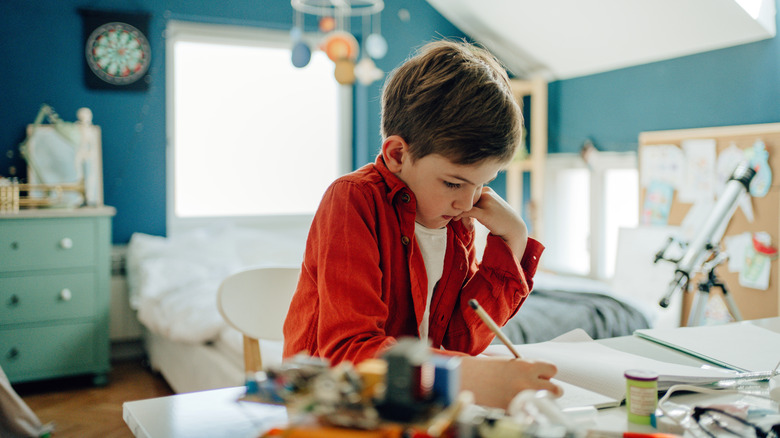What Hilary Farr Wants You To Know Before Choosing A Paint Color For A Child's Bedroom
A child's bedroom is often the best place for them to fully express themselves, as it's typically the only room where they have complete control over how it looks. Further, paint is one of the easiest and most budget-friendly upgrades you can complete in a space. Because of these reasons, Hilary Farr from HGTV's "Love It or List It" and "Tough Love With Hilary Farr" always allows the child to take the lead and choose whatever paint shade they want for their room. "I think that when it's a child, no matter what age, they should have the chance to experiment with color," Farr says in a clip posted on TikTok by HGTV. "So I love giving them the lead, and I will paint the room that color. They may love it, they may not love it, but they will learn." Allowing kids to pick out their own paint color helps them express themselves and discover what aesthetic they truly enjoy.
As Farr touches on, letting kids choose whatever paint color they want for their room helps them be confident in their decision-making skills. Choosing a wall color is often one of the first big decisions in their life, so it teaches them to be decisive and follow through on their decisions. Allowing them to choose a shade they love can also make them feel connected to their bedroom, which may lead them to want to take care of it. Because they enjoy their room, they may be more likely to keep it tidy and well-maintained.
Helping your child choose the right color for them
The color of a child's bedroom should reflect them and their personality. That's why Hilary Farr allows her client's children to choose whatever paint shade they desire. But are there certain colors that are better choices for kids' bedrooms than others? The short answer is yes, and it often comes down to color psychology. A bedroom should be a relaxing place that helps lull you to sleep, which is why some experts suggest neutrals, light blues, greens, and purples. These are calming colors that aren't too stimulating. However, that doesn't mean your child can't choose a bolder shade. If they want something extra bright, you could compromise by painting the walls a softer shade to prevent overstimulation but then adding a pop of color with an accent like a painted headboard, a bold piece of furniture, or a colorful two-toned wall.
Additionally, be prepared for kids to want to change the color of their room over the years. As kids age, their interests change and their tastes begin to develop. They may have liked bright turquoise in elementary school, but their middle school self may enjoy a slightly more subtle shade. Allowing their room to evolve as they grow is just another way to encourage their self-expression. As for the perfect paint color for your child's room, this ultimately comes down to what they want to surround themselves with.

